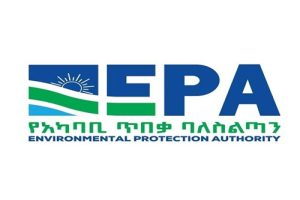
BY GETACHEW MINAS
Ethiopia has faced recurring periods of drought, high population growth and associated food insecurity. The barren soil, the little water available and the scarce vegetation are heavily strained, and natural resources are scarce. This leads to existential challenges, especially for the small farmers in the country. They are limited in their ability to practice a healthy diet of their own, as they lack necessary resources such as land, livestock and financial resources.
Knowledge about healthy nutrition and adequate hygiene and care practices are essential to improve the nutritional security in Ethiopia. Rural communities have to be supported in the cooking, processing and preservation of food. Secure and well-balanced diet, varied and healthy food is useful for nutritional security. Rural families have to be trained to grow different types of fruit and vegetables in their home gardens. The use of different plants with important ingredients such as vitamins A and D, iron and zinc are promoted for use by families in both the rural and urban areas of Ethiopia.
Most people residing in some regions of the country are chronically malnourished. Women of childbearing age and infants are facing malnutrition. It affects the newborns causing them serious developmental damage. If essential nutrients such as vitamin A, iron or zinc are missing during infancy, it results in a lifelong reduced growth and a weakened immune system. Children having insufficiently balanced meals also suffered from immune-deficiency. In many parts of the country where there is a shortage of clean drinking water, children suffer from diarrhea. Reducing malnutrition requires awareness creation with behavioral change.
The goal of reducing malnutrition should be supported not only with nutrition sensitive agricultural projects, but also with sea food and cod liver oil that enhance the nutritional status of the people. In so doing, sensitivity to the culture of both the rural and urban people is a precondition. Moreover, projects for improving the nutritional status of people should be reinforced with a campaign to influence people, particularly women, on the value of nutritious food. Information, education and communication, IEC, focused on nutrition security is of the essence. Those government agencies responsible for human development have the mission to inculcate the youth on the value of cod liver oil and nutrition security for all age groups.
Cod liver oil is a dietary supplement derived from liver of cod fish. As with most fish oils it contains the omega-3 fatty acids. It is rich in vitamin D. It was first promoted for the treatment of TB in 1770, and it was widely used for this purpose in the nineteenth century. It was reported that the pure fresh oil from the liver of the cod is more beneficial in the treatment of TB, leading to a fall in death rates. Cod liver oil may offer significant protection against the development of diabetes because of its high content of vitamin D. It was used for the treatment of rickets, a vitamin D–deficiency disease characterized by an inability to harden the bone structure, resulting in softening of the skull bones, bowing of the legs, and weakening of backbone and joints.
Rickets is now uncommon in most developed countries due to the consumption of vitamin D added to milk. Emerging evidence indicates that vitamin D supplementation from cod liver oil and other sources during early childhood can prevent not only rickets but also diabetes. Studies show that vitamin D fortification may offset some of the diabetic effect of some food items. Studies indicate that children, who regularly took vitamin D, primarily from cod liver oil, had highly reduced risk of developing diabetes. However, those who had a vitamin D deficiency actually had very high risk of developing the disease.
Studies found that the use of vitamin D from cod liver oil during pregnancy significantly reduced the frequency of diabetes in the offspring. Furthermore, studies looking at vitamin D status in the blood of newly diagnosed individuals with diabetes have found much lower levels of the vitamin in these patients than in healthy persons. Because vitamin D can be produced in the body by the action of “sunlight” on the skin, lack of sun exposure during childhood may also play a role and partially explain the higher diabetic rates. Vitamin D in recent research has been shown to prevent alien elements from developing in the body. This risk could be reduced through adequate provision of vitamin D during pregnancy and early childhood.
Medicinal cod-liver oil is prepared from the fresh raw liver of the cod and other species. The principal producers and suppliers of the raw material are European countries, with refining and processing plants. Historically, cod-liver oil has been used solely for non-medical purposes. Its introduction into medicine was largely due to a physician, Dr. Samuel Kay. The original method of preparation was the “rotting process”, in which the livers were allowed to rot in barrels and the oil rising to the surface was skimmed off. The more modern “steaming process” was introduced at a later stage. The cod livers, which contain oil, were removed immediately. The fish were boarded and transferred to steamers in which the oil is released from the tissue, or stored in chilled conditions for later processing at a shore stations. The oil is stored in land-based tanks prior to bulk shipment for refining and processing.
The principal stages in the preparation of the medicinal cod liver oil are (1) refining of the crude oil, (2) drying, (3) winterization, (4) deodorization, (5) standardization for vitamin content. Refining of the crude oil takes place with the objective of improving the quality and flavor of cod-liver oil under air-free conditions to avoid rust. The crude oil is rapidly heated and passed to mixers to removes impurities. Oil and water are separated without contact with air. The refined oil is then mixed with water, reheated and separated. After refining, the drying process follows in a vacuum drying, which continuously evaporates any small amount of residual water, leaving behind highly refined oil.
After drying, all medicinal oil and veterinary oils are cooled and solidified. The solid is removed by cold filtration and leave a product. Finally, deodorization takes place to remove impurities to protect the oil from rust. This process establishes the palatable flavor of the finished oil. The medicinal oil is finally standardized for vitamin content by blending it with vitamin A and vitamin D3. Each stage in the preparation of cod liver oil is important as it leads to the next one. The sequencing of these stages is necessary to maintain the quality the oil.
The fatty acid composition of the oil is determined and classified as saturated, mono-unsaturated and poly-unsaturated fatty acids. The oil is reacted with acid to obtain the yellow-brown color. It is now common practice to add some vitamin E to cod-liver oil to prevent the reduction of the user’s vitamin E status. The oil should be kept in well-filled airtight containers, protected from light and in a cool place. Medicinal cod-liver oil is a yellow pale liquid with only a slightly fishy odor and taste. The oil has acid and iodine values. The medicinal properties of cod-liver oil are mainly due to vitamin A and vitamins of the D group. The polyunsaturated acids are proven to be very important for human health. Cod-liver oil is still widely used in underdeveloped countries for the prevention and cure of rickets.
In recent times, the use of the oil has changed a little in its traditional use as a vitamin supplement. It now finds application in the relief of rheumatic pains and joint and muscle stiffness. Cod-liver oil has the established activity of reducing blood cholesterol levels and affording protection against cardiovascular disease. It also has extensive veterinary use. Many other fish-liver oils resemble cod-liver oil, and shark-liver oil is also included in the category for medicinal purpose. Cod-liver oil, goose liver paste, cattle liver, and chicken liver would rank among the four richest sources commonly consumed. Eggs and dairy items are also dietary sources, at lower specific contents. It should also be noted that carotenes, obtained from carrot, sweet potatoes or apricots, also form part of fresh foods and milk. Intact carotenes are the pigment that gives the yellow trace to animal fat; this can also supply vitamin A to the consumer. Cattle liver also has vitamin A.
Researchers reported that they could produce rickets in dogs by feeding them oatmeal only. But, they could also cure them of the disease by adding cod-liver oil to the diet. Once it was known that exposure to sunlight could prevent and cure the disease, exposure of food and a variety of other substances to the vitamin D–producing radiation could also cure it. Investigators reported that consumption of olive, cotton and linseed oils, lettuce, growing wheat, and a variety of other substances are endowed with cod liver oil properties. This concept was used to add milk to vitamin D, resulting in complete elimination of rickets.
However, with the advent of highly “effective” anti-TB drugs, interest in cod-liver oil and other nutritional interventions declined. An influential clinical trial was carried out to compare hospital treatment with outpatient treatment with regard to nutritional influences on treatment outcome. Patients treated in the hospital had substantially “better” diets and gained more weight than home-treated patients. Improvement was slightly faster in the hospital treated group, but the outcomes were nearly the same in the two groups. Effective “drugs” have overshadowed the effects of nutritional support. In a surprising twist of situations, however, interest in nutritional intervention revived. People looked for cod liver oil once again for its medicinal values.
Studies show that in the past decade, trials of nutritional intervention on TB patients have shown modest to no benefits. They have also been examined to determine the effect of vitamin D supplement. Those patients that are vitamin D-deficient improved in body weight when given the supplement. Decades ago, sunlight or cod liver oil, both abundant sources of vitamin D, have been used to treat TB patients. Vitamin D is available in a variety of forms in cod liver, the process of which involves refining, bleaching, and deodorization. This treatment of the vitamin containing oil substantially depletes its activity.
Fully cleaned and deodorized cod liver oil is sold with “synthetic” vitamins added to it. Most of the cod liver oils on the market fall into this category. It has been discovered that vitamin D is sensitive to air, heat, ultra violet light, and mineral acids. These sensitivities are exaggerated by the presence of iron. Therefore, care should be taken to store and ship vitamin D and its various product forms by methods that minimize exposure to these conditions. This vitamin can be wasted if not well preserved and protected from different weather condition during packing and shipping from point of production to the market.
THE ETHIOPIAN HERALD JUNE 24/2021




